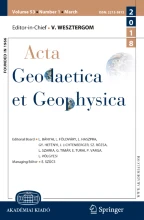
In this paper, we introduce the novel Chebyshev Polynomials Least-Squares Fourier Transformation (C-LSQ-FT) and its robust variant with the Iteratively Reweighted Least-Squares technique (C-IRLS-FT). These innovative techniques for Fourier transformation are predicated on the concept of inversion, and the C-LSQ-FT method establishes an overdetermined inverse problem within the realm of Fourier transformation. However, given the LSQ approach’s vulnerability to data outliers, we note the potential for considerable errors and potentially unrepresentative model estimations. To circumvent these shortcomings, we incorporate Steiner’s Most Frequent Value method into our framework, thereby providing a more reliable alternative. The fusion of the Iteratively Reweighted Least-Squares (IRLS) algorithm with Cauchy-Steiner weights enhances the robustness of our Fourier transformation process, culminating in the C-IRLS-FT method. We use Chebyshev polynomials as the basis functions in both methods, leading to the approximation of continuous Fourier spectra through a finite series of Chebyshev polynomials and their corresponding coefficients. The coefficients were obtained by solving an overdetermined non-linear inverse problem. We validated the performance of both the traditional Discrete Fourier Transform (DFT) and the newly developed C-IRLS-FT through numerical tests on synthetic datasets. The results distinctly exhibited the reduced sensitivity of the C-IRLS-FT method to outliers and dispersed noise, in comparison with the traditional DFT. We leveraged the newly proposed (C-IRLS-FT) technique in the application of low-pass filtering in the context of gravity data. The results corroborate the technique’s robustness and adaptability, making it a promising method for future applications in geophysical data processing.
Inversion-based Fourier Transformation using Chebyshev Polynomials in discretization of the spectrum.
Robustification by means of Cauchy-Steiner weights.
Reduced outlier sensitivity of the new method compared to the traditional DFT.


Avoid common mistakes on your manuscript.
In the field of geophysical investigations, the principal focus is decoding the subsurface structure of the earth based on data procured from or near the earth’s surface. The amassed data usually correlate with one or several significant features of the earth, thereby enabling a feasible determination of these physical properties by addressing an inverse problem. When a model of the subterranean area of interest is built, the inverse problem can be managed to deduce probable parameter values for the model. The end goal of geophysical inversion is to construct an earth model, characterized by an array of physical quantities that align with collected observational data. As data acquisition techniques advance incessantly, there emerges a pressing need for cutting-edge data processing methods. The central aim of this study is to develop innovative data processing algorithms by applying inverse theory to Fourier transformations for geophysical applications. In signal processing, the transfer of data from the time domain to the frequency domain is a conventional operation. The Discrete Fourier Transformation (DFT) algorithm is typically employed to discern the discrete frequency constituents of a regularly sampled time-domain dataset. However, the processing method’s vulnerability to noise is a crucial consideration, as noise recorded in the time domain is effectively transformed into the frequency domain. To significantly reduce the impact of data noise and outliers during data processing, a more robust method known as Iteratively Reweighted Least Square Fourier Transformation (IRLS-FT) was introduced by Dobróka et al. 2015. The efficacy of the algorithm was evaluated across various facets, including its application to a magnetic dataset (Dobróka et al. 2017) to affirm its noise-reducing capability. By integrating the IRLS algorithm with Cauchy-Steiner weights, the Fourier transformation was treated as a robust inverse problem, with the Fourier spectrum discretized using Hermite function-based series expansion (H-IRLS-FT). This methodology has proven successful in processing gravity data (Dobróka and Völgyesi 2010), well logging data (Dobróka et al. 2016; Szabó 2004), and Induced Polarization data (Turai et al. 2010). As the Hermite functions are eigenfunctions of the Fourier transform the H-IRLS-FT method is quick and accurate with a disadvantageous need of a preliminarily knowledge of a scale factor involved in the Hermite functions. To avoid this disadvantage we propose in this paper a new inversion-based Fourier transform using Chebyshev polynomials as the fundamental functions, thereby discretizing the Fourier spectrum through series expansion. Building on these contemporary advancements, we introduce the Chebyshev-Polynomials Least-Squares Fourier Transformation (C-LSQ-FT), and its robust version, the Chebyshev-Polynomials Iteratively Reweighted Least Squares Fourier Transformation (C-IRLS-FT). By employing this technique, we determine the expansion coefficients by solving an overdetermined inverse problem. Furthermore, the Iteratively Reweighted Least-Squares method was integrated to enhance the process’s robustness. In our framework, each data point contributes to the solution based on its error margin, achieved by iteratively weighting individual data points using Cauchy-Steiner weights, consequently crafting an algorithm resilient to data outliers, especially those sparsely scattered. By comparing this method with the traditional DFT algorithm in magnetic data’s pole reduction, we demonstrated the superior robustness and resistance of the C-IRLS-FT algorithm. These methods are initially tested on synthetic datasets, specifically configured with two types of noise, to assess the method’s robustness under varying conditions. Subsequently, the refined method is applied to actual exploration datasets, offering an opportunity to examine its effectiveness in real-world scenarios. By combining the analysis of synthetic and real-world datasets, the research aims to not merely further the development of the C-IRLS-FT method but also perform an exhaustive evaluation of its advanced features. The ultimate goal is to validate the enhanced performance of this method in processing geophysical data. Emphasis is placed on demonstrating its superior robustness, resilience to noise, and overall effectiveness, especially when juxtaposed with traditional techniques such as Discrete Fourier Transformation (DFT). Through the amalgamation of theory, innovation, and practical application, this study strives to contribute significantly to the field of geophysical data processing, providing researchers and industry professionals with a refined tool that enhances the quality and reliability of subsurface data interpretation.
The Chebyshev polynomials (Fig. 1) of the first kind fulfill the differential equation: